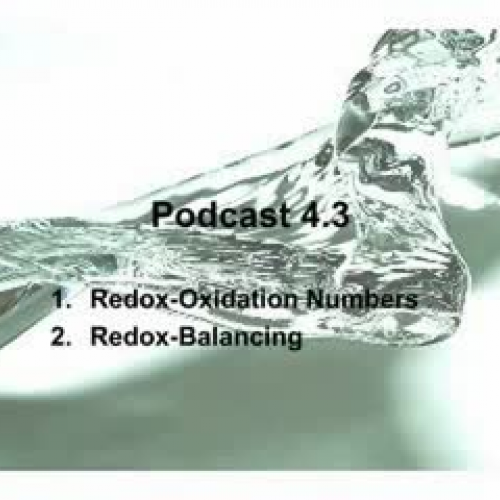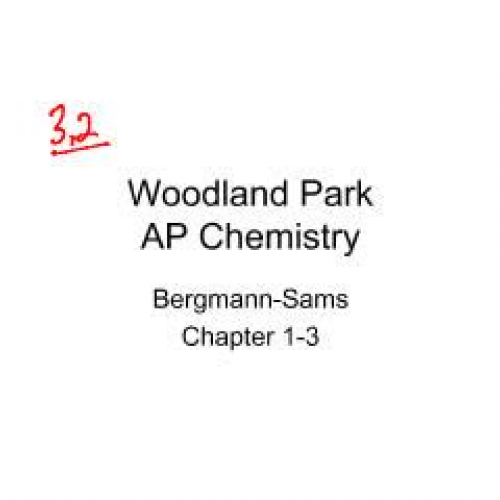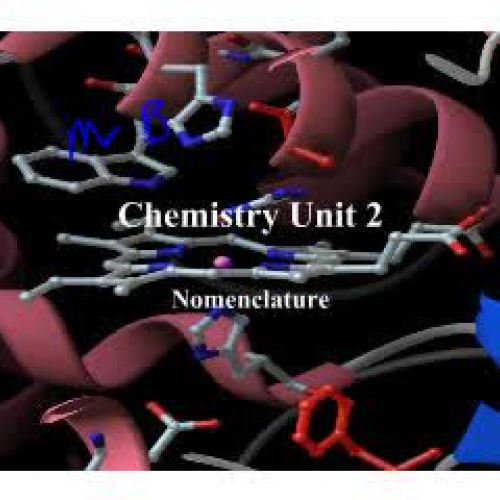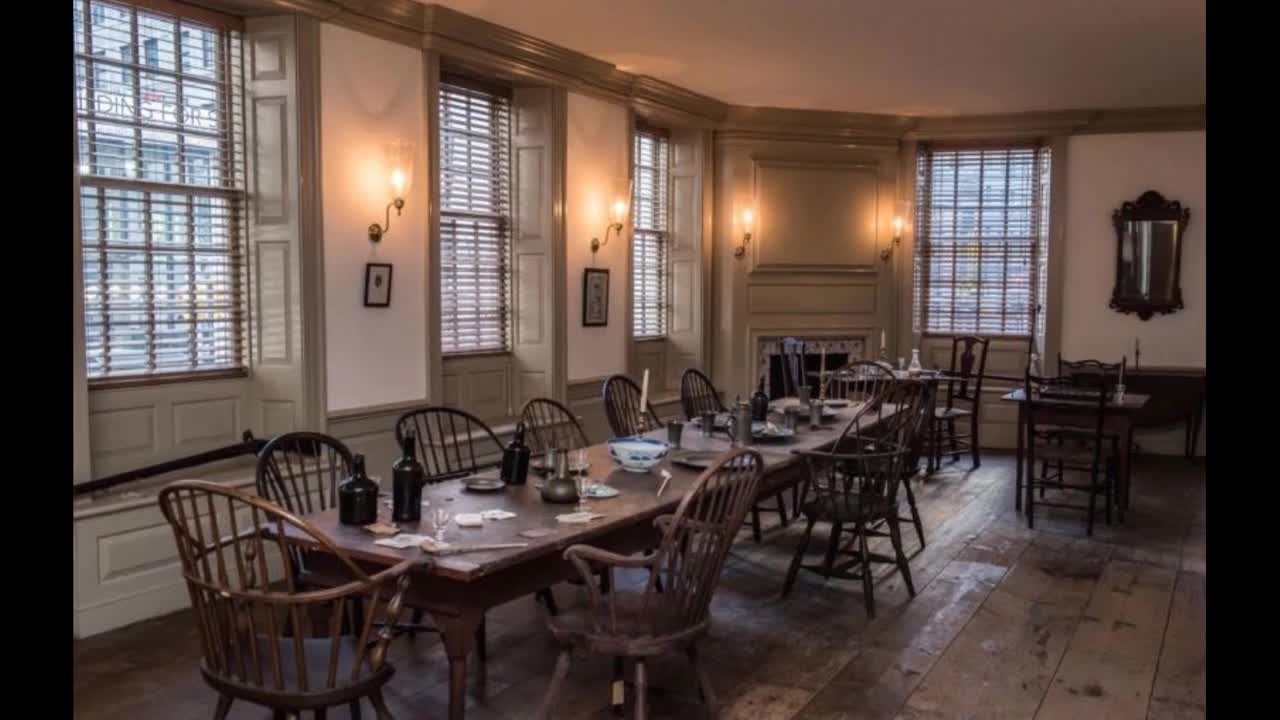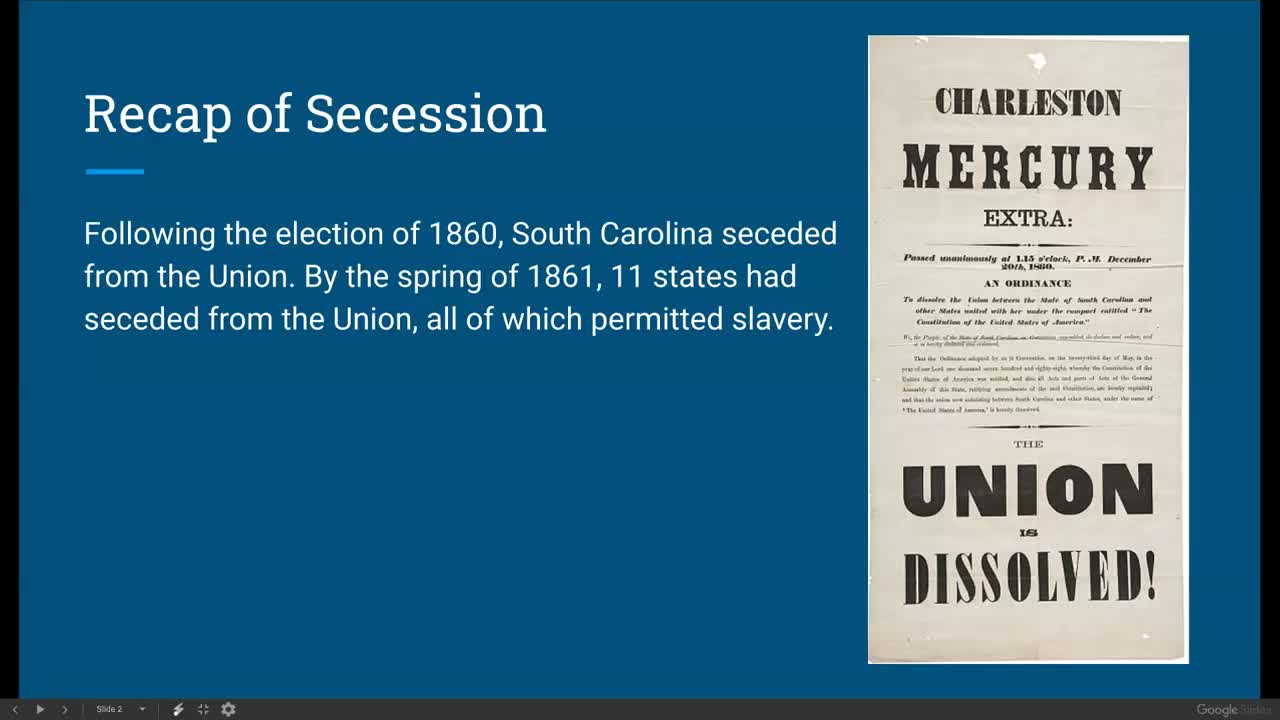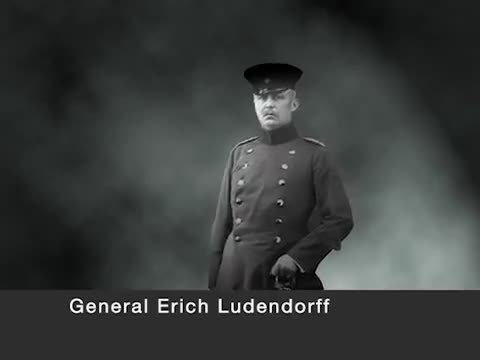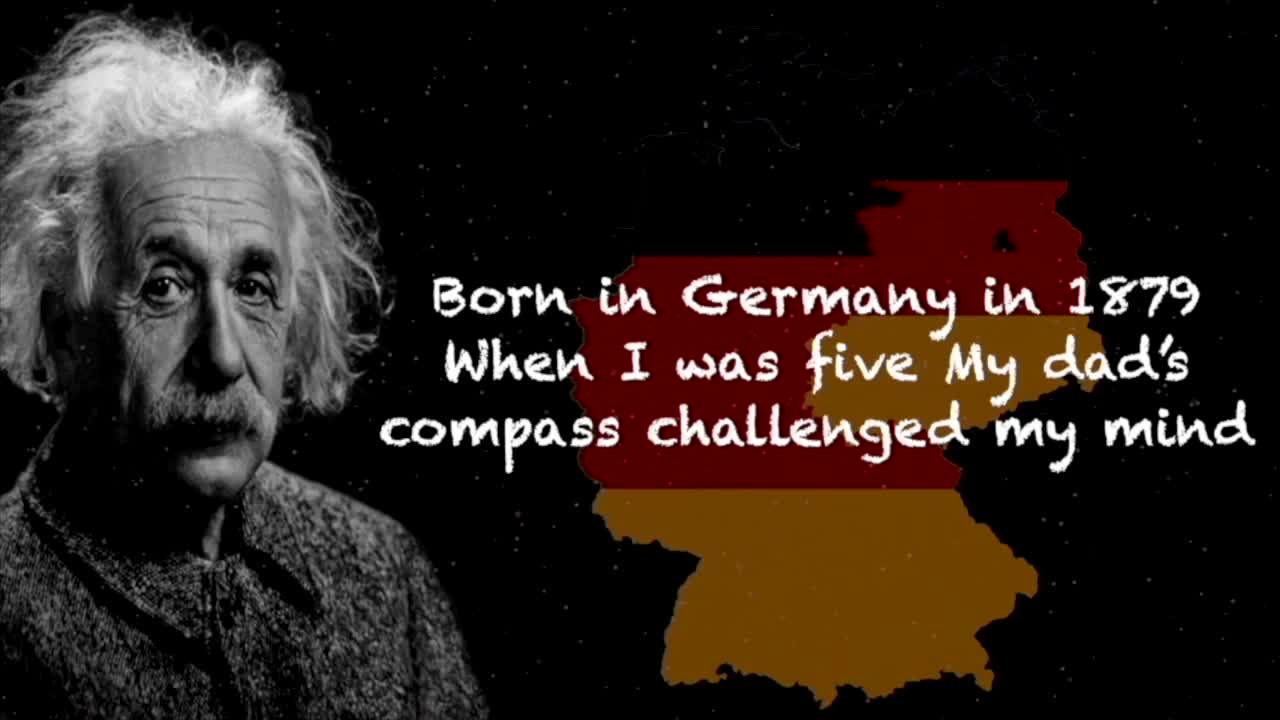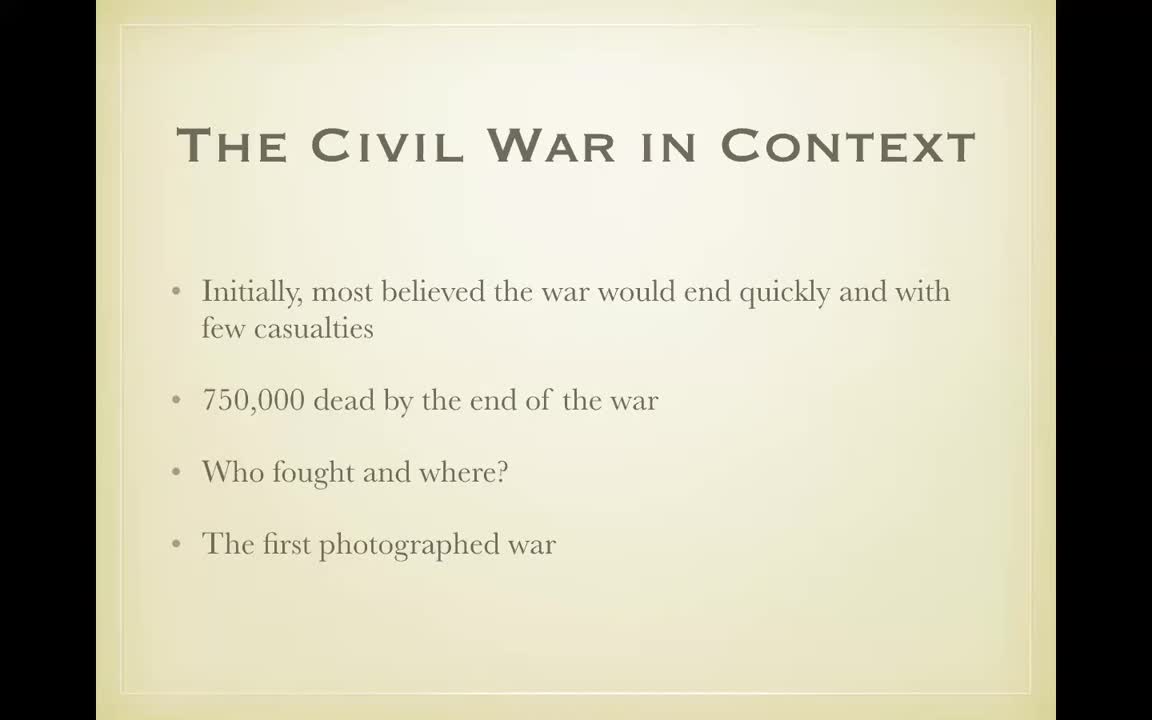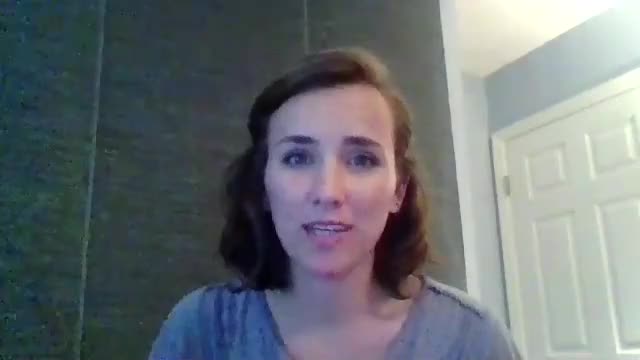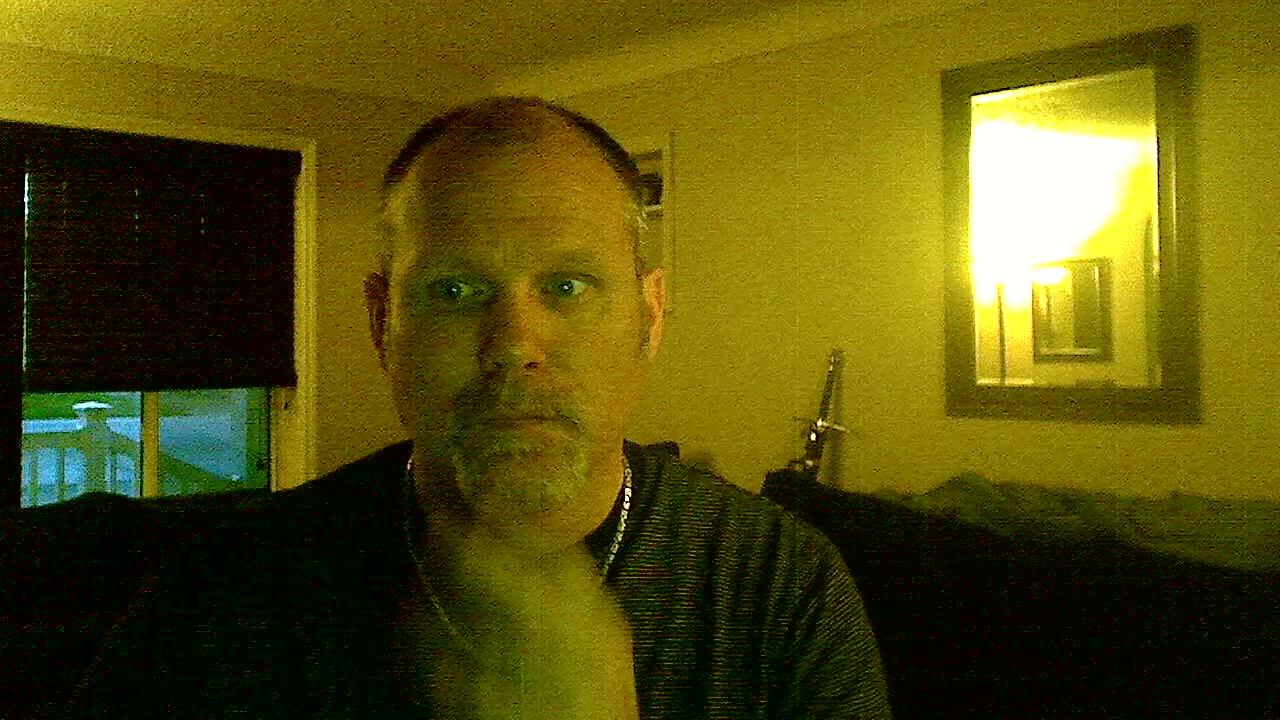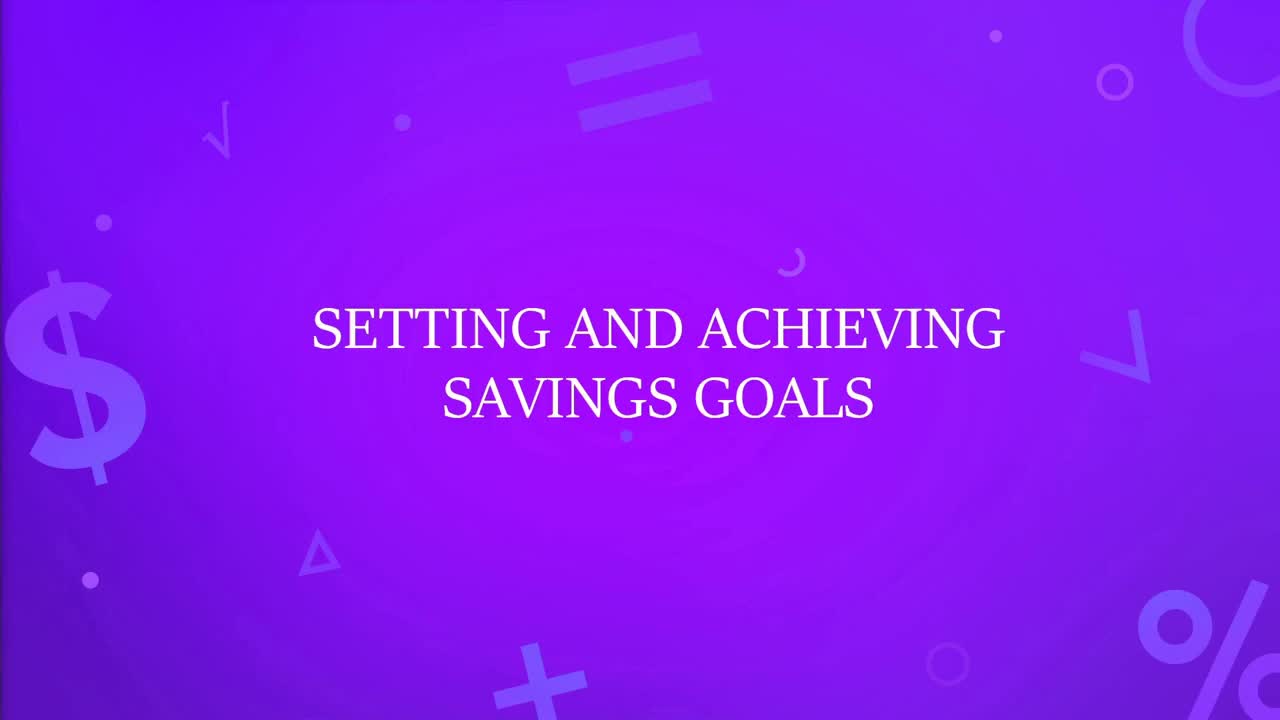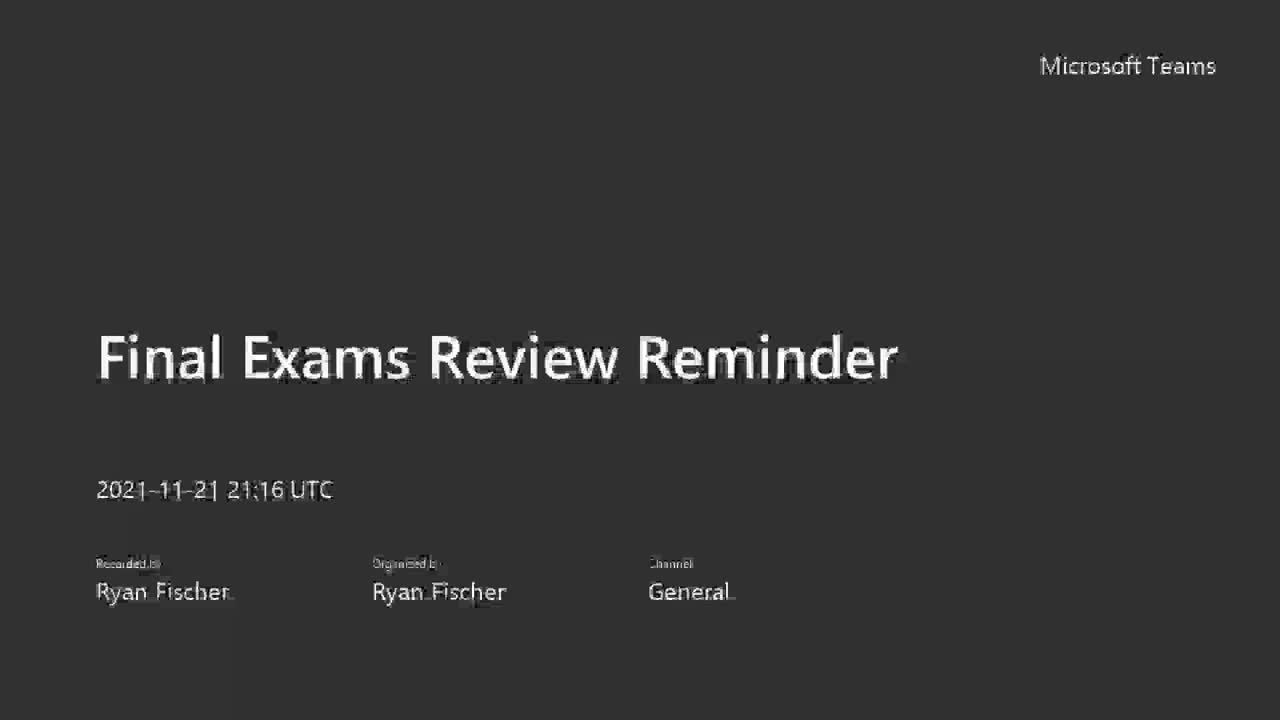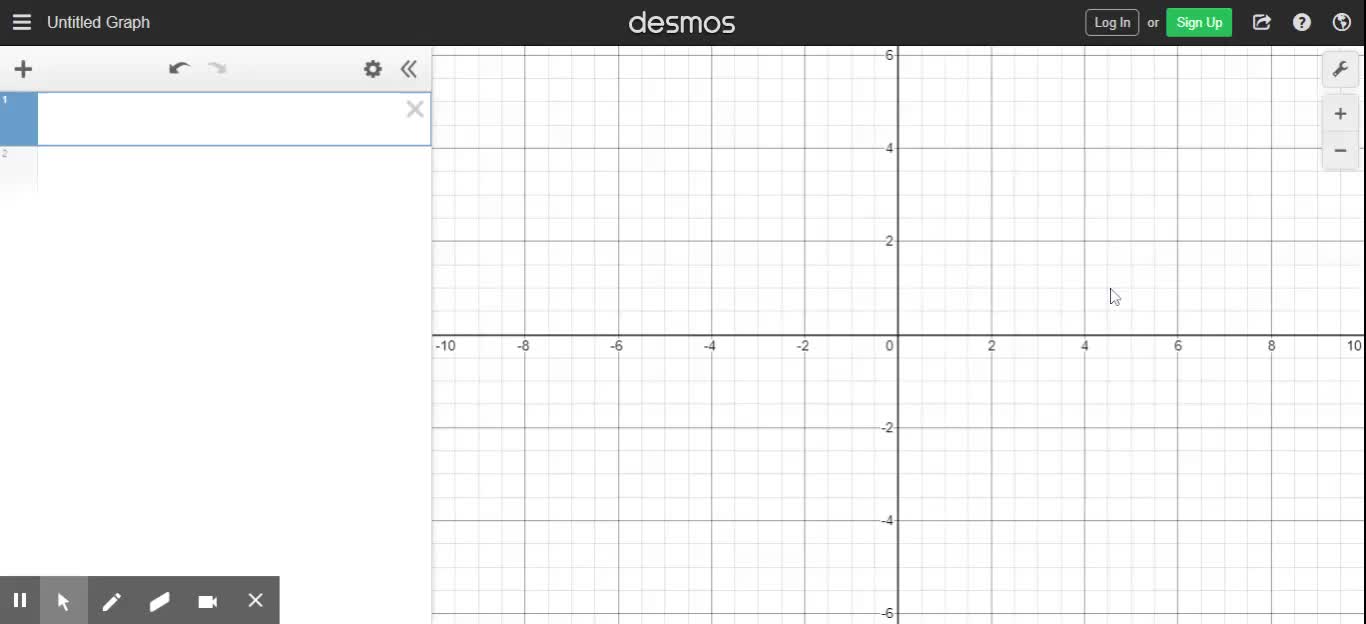WPHS AP Chemistry Podcast 4.3
High School / History / Podcasts
Hey, there everybody. This is AP camera shoot podcast 4.3. Okay, so today we're gonna be looking at oxidation reduction numbers and oxidation reduction balancing notice we have a nifty little word here called redox. That would be the read is for reduction in the ox is for oxidation. All right? So we're going to abbreviate that redox nice and easy. All right, so in your notes, you have some rules for what it's called assigning oxidation numbers now. This is the very basic thing that we learned how to do and this is going to help us later on balance oxidation reduction equation. So a few rules, atoms have oxidation states with zero. So whenever you see an element by itself, including diatomic elements, I like O2, for example. Okay, that's always going to have an oxidation state of zero. Whatever it's by itself or something like if E or so on. So something like that, oxidation number of zero. Ions keep the charges, so if you have in a plus, that's a plus one charge. So this doesn't oxidation state of plus one. Oxygen in a compound is minus two. Always, unless it is a peroxide. Then it's minus one. So that's one very rare exception, but we'll count encounter in every once in a while. Fluorine is always minus one. Hydrogen is always plus one and last at the hydride and then it's minus one. And again, that's going to be pretty rare for our purposes. Most often we'll see it as plus one. Now, the sum of the oxidation states equal to charge of a substance, if it is a compound, then a zero. An exception to that would be if it is an ion, and then it would have the charge of the ion. So let's say that we have a nitrate ion because a charge of minus one, then all the oxidation numbers of the nitrogens and the oxygens all together will have a sum of negative one in this case, whereas something like carbon dioxide would have a sum of zero. So let's do a few examples. First off, let's look at the substance K, F potassium, fluoride. Now, the rules said that fluorite fluorine is always minus one. So fluorine here has an oxidation state of minus one. This overall compound needs to have a total of zero, which would make potassium plus one because plus one minus one is zero. Okay, let's look at H and O three. Okay, we learned that oxygen is always minus two. Minus two. Now there's three of them, so that's going to be a total of -6 because three times minus two is negative 6. I don't have any rules about nitrogen, hydrogen, it said, was always plus one unless it's a hydride. This is an acid, which is not a hydride, so we're going to make that one plus one. Overall, everything needs to equal zero. So from that, we should be able to deduce what nitrogen is. We have -6 and a plus one. That's a total of -5. So to make that equal zero, nitrogen must be. Plus. 5. Plus one plus 5 -6. We add those together that does in fact equal zero. All right, next, the carbon dioxide, oxygen and the compound is always minus two. Okay, but there's two of them, so that's a total of minus four. And the sum of this compound should be zero. So carbon should be plus. Four. So carbon dioxide, state is plus four, oxygen is minus four. All right. So how about let's go okay in, I don't know. Sorry. Let's do this on any two CR two O 7. Okay, now this is an ionic compound. And in this ionic compound, we have the sodium ion. And we have the dichromate ion. So the sodium ion is always going to be plus one. So this guy's got to be plus one. But we have two of them. Okay, so that's a total of plus two in this whole compound. So each individual sodium is plus one for a total plus two. It's important distinction to make. Oxygen is always going to be minus two. We have 7 of them, so that's going to be a total of -14. So negative 14 plus two, that's negative 12. So the chromium's total have to be plus 12. And we have two of them. We need plus 12, so that means each one is going to be plus 6. For a total of plus 12, so plus looks close. 12, there we go. Plus two plus 12 -14 at equals zero, because this is a compound. So it has to equal zero. Again, individual sodiums are plus one individual chromiums or plus 6 individual oxygens or minus two. So those are deer oxidation states, the totals of them are here. We are primarily going to be concerned with individual oxidation states. So just keep that in the back of your head. All right, let's do a couple more. We'll do H two O two. Ah. Now H2O is water. H two O two is a weird little compound. This is hydrogen peroxide. Now the rules in the previous page said that peroxides are minus one instead of minus two. So this is a weird exception. So we thought here is minus one for a total of minus two. You tried it in is going to be plus one for a total of plus two. Okay, fine, let's just do an ion, MN O four minus. That's the permanganate ion. Okay, each oxygen minus two. There's four of them for a total of -8. So the manganese has to be what? Plus not plus 8 plus 7. Why? We need to add together to equal negative one, because this particular substance has a charge. It's an ion. So keep that in mind. Okay, so that's assigning oxidation numbers. Now. Next thing we have are a few definitions. We have oxidation reduction oxidizing agent reducing agent and we'll take a look at some examples. All right, oxidation oxidation is when a substance loses electrons. So it's a loss of electrons. E minus reduction is when something gains. Electrons. And there was a few little ways you can learn. You can remember these. I remember oil rigs. Oxidation is losing. Reduction is gaining. And of course we're talking about electrons. Okay? Another one is Leo. Says ger. A Leo the Lion says ger. Losing electrons, oxidation, gaining electrons, reduction. Oil rig or Leo Suzuki, two ways to remember which the definition of oxidation and reduction. Okay, now oxidizing agent. This is the thing that does the oxidizing. Okay. Let's say a substance gets oxidized. If a substance gets oxidized, it loses its electrons. If it loses that, maybe something has to take it. The oxidizing agent takes those electrons. It does the oxidizing. Reducing agent, then it's a thing that gives its electrons to the thing being reduced. So the thing that gets reduced gets some electrons. The reducing agent gives its electrons to the thing being reduced. So it does get a little confusing. But as long as you keep track of where the electrons going, it's not so bad. Now the oxidizing agent gets reduced. The reducing agent gets oxidized. So it seems a little strange. So the oxidizing agent does the oxidizing and in the process gets reduced. The reducing agent does the reducing and in the process gets oxidized. And you can not have one without the other. They always go together. Now this will get a little more clear later on when we do some examples. So let's take a look at a few examples here. What we're going to do now is we're going to determine which substance here is being oxidized, which is being reduced, which is the oxidizing reagent and which is the reducing agent. In order to do that, we first must begin by assigning oxidation states to each substance. We go through our rules. We know that atoms have an oxidation state of zero. This is just plain old lead. Gets no charge on it, nothing. So it's just going to have an oxidation state of zero. You know that oxygen as an by itself also has an oxidation state of zero. Okay, this is a diatomic oxygen. It's in its atomic form. So it has oxidation state of zero. Now here we have oxygen in a compound of the lead oxide. So oxygen here is going to be minus two, making lead plus. Two. Over here we have oxygen again, and it's going to be minus two. And there's two of them, so that's a total of minus four, which makes sulfur plus four. Okay, so let's take a look and see what's happened. Lead has gone from zero to plus two. Oxygen has gone from zero to minus two. Now you're probably thinking, well, where did the sulfur come from? Well, we don't know where it came from, so we can't really worry about it. So for now, let's just look at the ones we do know about. So we have oxygen minus zero going to plus two oxygen going from zero to minus two. So if you go from zero to plus two, that means you lost two electrons. Zero to minus two means you gain. Two, electrons. So Leo says ger, lose electrons, oxidation. Jane electrons, reduction. So what we can say then is that the lead was oxidized and that the oxygen was reduced. So the lead was oxidized. And the oxygen was reduced. So if lead was oxidized, something had to oxidize it. And the oxygen oxidized the lead, making it the oxidizing agent. If oxygen was reduced, then something had to reduce it. Lead did. Making lead the reducing. Agent. So the thing that gets oxidized is the reducing agent, the thing that gets reduced is the oxidizing agent. Let's look at another example. Here we have chlorine and some hydroxide, making hypochlorite, chloride, and some water. All right, again, we want to go through and assign oxidation states. Here's chlorine and it's atomic state, diatomic chlorine. Zero. Now here's oxygen in a compound, so minus two. Hydrogen is going to be plus one. And the whole thing overall with a negative charge, so negative two plus one is negative one. That's good. Oxygen is going to be minus two. Chlorine is going to be plus one because we want them to add together to have a total of a minus one charge, so they're equal to charge of the compound here. Here's just plain old chloride, so that's got to be minus one. Here's hydrogen again, plus one, and there's two of them. For a total of plus two, an oxygen is a course going to be minus two. So let's look and see what has changed. Chlorine has gone from zero. To plus one here. Now, wait a minute, here's chlorine over here with a minus one. So what has happened? What happens in a reaction like this is that the chlorine is both oxidized and reduced. So the chlorine goes from zero to plus one, and it also goes from zero to minus one. So some of the chlorine gets oxidized, this one last electron, and some of the chlorine gets reduced. Because it gained an electron. Okay, nothing else changed. So if nothing else changes, then nothing else was oxidized, nothing else was reduced, oxygen's minus two, and hydrogens plus one over here. Here's how to do plus one oxygen is minus two. That didn't change. So it can not be oxidized reduced, but can also neither be an oxidizing region or reducing agent. So the chlorine here was oxidized reduced was the oxidizing agent and was the reducing agent. Kind of a weird one. Okay. Next. Balancing oxidation reduction reactions. Now, here's some more rules. You need to become familiar with these. We'll be using these rules as we go through and balance these. Now, sometimes these can be a little ugly, but we're going to do our best. All right, first thing right reactions is half reactions. One for the oxidation and one for the reduction. This is why we learn how to do oxidation states and learn how to determine what's oxidized and reduced because we need to split these up into half reactions. Next, it's a balanced all elements with except HNO. Okay, so we're going to balance everything except for hydrogen and oxygen. Then we balance the hydrogens with hydrogen ions. We've developed oxygen with water and I'll show you what that means in a second. Balance charge with electrons, and then multiply reaction factors such that the electrons cancels, and then add both half reactions. They're basically a smush them together. All right, so these rules don't make a whole lot of sense without seeing them in action. So let's take a look at our first example here. We have MNO four minus plus two plus plus three. FE plus. Man, I can't even talk today. Let's try that again. MIO four minus plus FE two plus makes FE three plus plus MN two plus. Okay. So let's take a look here. And. Where are my problems? I worked all these out. I can't find them. And I'll see this. It's almost not working out. Oh, there it is. I found it. Okay, so first step says we need to split these up into half reactions. We need to determine what is oxidized and what is reduced. All right, so let's look at M and O four minus. This is the permanganate ion. Oxygen, of course, is going to be minus two, and there's four of them, so that's a total of -8, so manganese is going to be plus 7 because we need everything to have a minus one charge. So we have plus 7. And then four times the negative two for each oxygen. That equals negative one. That's what we have this thing to have to charge. Okay, this ion here is plus two, so it's just by itself. This ion here is plus three because it's by itself and this one is plus two. Okay, so what if we look what have we found here? We found that manganese goes from plus 7 to plus two. To do that, you have to gain 5 electrons. So if you gain electrons, that's reduction. So the manganese is reduced in this particular instance. The iron goes from plus two to plus three. That is a loss of electrons, so that is oxidation. So MNO four minus becoming MN two plus is our reduction reaction. Let me use a different color here. FE two plus becoming every three plus is our oxidation reaction. So I'm going to go to this blank slide here. And we're going to work out. So we're going to split up the two reactions. So we're going to take M and O four and then O four minus charge. And it becomes MN two plus, and then we're going to take the iron, which is FE two plus, becoming FE three plus. Now, notice I have my arrows lined up right above and below each other. That's going to be important later on. So getting the habit of making these run on top of each other. Okay, so if we go back to our rules, it says to balance all non oxygen and non hydrogen things first. So if we look in this top reaction, the manganese, there's one manganese, and there's one manganese here. Okay, so that's good. And I'm going to do each half reaction one at a time. So let's just deal with the top reaction. Next, it says to balance hydrogens with H plus and oxygens with water. Well, I don't see any hydrogen. So let's look at our oxygen here. We have four oxygens and MNO four minus. So what I'm going to do is I'm going to add four water molecules over here. Probably thinking, well, mister Sam, how can you just add water? Well, all of these reactions are taking place in water. So there's plenty of water lying around to participate. All right. Next, it says to balance hydrogens with hydrogen ions. Now over here with the water, we have four H2O, so that's a total of 8 hydrogens, so we're going to put 8 hydrogen ions on the left side. That way those bounce out. And you're going to say again what mister sands, where do you get hydrogen ions? We'll look at this. This takes place in an acidic solution. It would either take place in acidic or basic solution most often. So there's plenty of hydrogen ions floating around in there. So now what we're going to do is we're going to balance the charge with electrons. So let's look at the charge of the left side of the arrow. We have plus 8, and we have minus one. So plus 8 minus one, that's plus 7. Over on the right hand of the equation we have plus two. So plus 7 on the left plus two on the right, we need those to be the same. So to do that, I'm going to add 5 electrons to the left. Because the electrons are negatively charged. So plus 8 and negative 5 is negative one and a negative 5 is negative 6. Plus plus two on the left. Plus two on the right. So they're now the same. Okay, so that one's done for now. And let's look down here. We have FE two plus FE three plus one of each, no oxygens, no hydrogen, so this one's going to be nice and easy. We're just going to add an electron to balance the charge. Plus two on the left, plus three minus one is plus two on the right. Okay? Now, if we look back at our balancing redox rules, it says that we need to multiply reactions by factors such that the electrons cancel. Let's go back here. I have 5 electrons in this reaction here. And I have one electron in this reaction here. So what do I need to multiply to get them all the same? I need to multiply my oxidation reaction by 5. And by doing that, I now, if I distribute my 5, I'll have 5 electrons, because electrons always must be the same. Always, so here's what I do, mister Bergman might do this slightly differently, but everybody kind of has their own little method. I rewrite everything at this point. So I like things to be nice and tight. Yeah, I know you're all laughing because you've seen my desk. It's a train wreck. But when I do my chemistry, I like it to be nice and tight. Now I'm going to keep the colors the same, just so you can see where everything is coming from. Okay, so that's everything that I just wrote down there that came from the left side of the equation. The left side of my hero. This is, again, why you want to always have your arrows lined up so you can kind of see what's going from one side. Okay. And I know I'm not talking much. Give your ears a break. Okay. So there's everything that came from the equation. Everything. The left side on the left, everything from the right side on the right. Now, the great thing about chemistry is you can get rid of a bunch of stuff. Anything that's the same on both sides of the arrow of an equation is going to be canceled out. So the electrons will always cancel out because they're always going to be the same because in our last step we made them the same. They're always going to be like that. So they are always going to go away. All right, so here we have 8 H plus, then over there, MNO four, and those over here, FE two plus, some of those over here. So everything's canceled that we can cancel. Let's just double check our balancing. Here I have 8 hydrogens. Four times two is 8 hydrogens. Here's a manganese. Here's a manganese. Here's four oxygens. Here's for oxygens. Here's 5 irons. Here's 5 irons. Okay, everything is balanced out. So we're done. Now, never leave an equation looking icky like that. Always rewrite it. I don't want to see things canceled out left there. I don't want to see your chicken scratch. Always rewrite it, make it look nice and tidy. I know, I know you've seen my desk. So rewrite your equation and make it look nice and happy. You never know. You might catch a mistake when you rewrite two. And there we have it. Our reaction. All right, let's look at the next one. Next reaction. K two SO four and NaCL is making CO2 and SO three to minus. All right, so here we go. Let's assign oxidation states. Okay, oxygen is always minus two. Potassium and potassium sulfate that's an ionic compound so that came from an ion, so it's plus one. Now, four oxygen, that's a total of -8. And potassium is a total of plus two because there's two of them. Four oxygens to potassium. So total plus two, total of -8. We need this all to be zero, so sulfur is going to be plus 6 in this case. I'm going to write that down here. Sulfur is plus 6. Sodium's plus one chloride minus one. We know sodium chloride. Here's chlorine in its elemental state. It's a zero. Oxygen is always minus two. We have a total of three of them, so that's a total of -6. We want the overall compound to have minus two, so sulfur is plus four. So what has changed? We have sulfur going from plus 6 to plus four. So that gained electrons. So that is a reduction. And then we also have chlorine going from minus one to zero. And that is gained electron, so that is oxidation. All right, so what I want to do is I'm going to write down the substances that have reduction and the substances that have oxidation on the next page. Now, we need to keep the compounds intact, so here we have sulfur going from plus 6 to sulfur plus four. I probably should use blue. Let's try that. Let's keep my colors consistent. So sulfur is plus 6 sulfur. Plus four. Let me hear this compound go some chlorine minus one to chlorine. Zero. So let's rewrite these on a blank screen. All right, so we have K two SO four. Becoming the sulfite ion. And then we have NHL. Becoming elemental chlorine. Okay. So let's work. One reaction at a time. First rule is that we balance all non hydrogen and non oxygen elements. So I'm going to start with the blue reaction here. K two SO four. All right, so how many potassiums two potassiums on the left and wait a second? There's not on the right. Well, that's weird. Well, I know it's an eye on a compound. I know these things are happening in water, so what I'm going to do is just go ahead and add two potassiums to the right. Instruments, what are they come from? Well, ultimately, they're going to come from here. And you'll see how this all works out later on. But the potassium here is an ionic compound, so they have to stay as an ion over here. Sulfur, one sulfur, one sulfur, one cell from the lab one cell phone, right? That's good. Oxygen, four sulfur, four oxygens on the left, three oxygens on the right, so we need another oxygen on the right. We add oxygens with water. All right, so now we have cross. Next, hydrogens. Well, we just added this water, so that gives us two hydrogens on the right, so we need two hydrogens on the left. We balance those with hydrogen ions. And now charge. On the left hand side of the arrow, we have plus two charge. On the right hand side, we have plus two and minus two for a total of zero. So plus two on the left, zero on the right, so we need two electrons on the left. All right, there's that. Now, bottom reaction, NaCL becomes CL two. Well, chlorines, there's two chlorines on the right, and only one on the left, so I can put a two in front here, and that balances my chlorines. Now, two sodiums, we're going to do the soap with the sodium, the same thing with the potassium, we're just going to write it as two sodium ions over here. Again, these are happening in water. We know that sodium chloride is going to dissolve in water. So we're going to assume that the sodium ions are just going to stay as sodium ions. And it's a good assumption because it's true. Okay, so we balance the non oxygen non hydrogen. I see no oxygen. So we don't have to worry about water. I don't see any hydrogens. We don't have to add any hydrogen ions, but charge when you balance charge. So the charge on the left hand side of the arrow is zero, the charge on the right hand side is plus two, two sodium ions. So to balance that, I need to add to the electrons. Okay, our last rule says we need to multiply by appropriate numbers to get the electrons to be the same in both reactions. I have two electrons here. I have two electrons here. They're already the same. So let's go ahead and rewrite our equation. And I will be consistent with my colors here again. So to draw two hydrogens and K two SO four and two NaCL okay, so that is going to form oops. I've got a head of black arrow. There we go. Let's try black hair. There we go. That's going to form. CL two. Two sodium ions. Two electrons. Right here. So fine eye on. Two K plus ran out of room. Gonna add the water definition in H2O. All right, so last time we determined that there was one thing that will always cancel, yes, that's right. Electrons. Those are going to go away. All right, do we have anything else common on both sides of the arrow? It looks like everything is unique. So we're going to leave it as that. And let's rewrite. Two H plus. Plus K two SO four. Plus two NaCL. CL two sodium ions. We have it. I'm ready. The next one. Is. This big old ugly guy? We have hydrogen ions, iron two ions, dichromate ions, becoming water, chromium, and iron. Now, let's go through and determine oxidation states as we have been doing. All right, here's hydrogen ions, so it's plus one. Here's plus two, because it's an ion by itself. All right, dichromate. Okay, oxygen is minus two. And we have 7 of them. That's a total of -14. Overall, we want a minus two charge, so we need to come up with a plus 12 with the chromium. There's two of them. So each one will be plus 6 for a total of plus 12, which is positive and negative 14 is minus two. Okay, hydrogen's plus one, oxygen is minus two. Plus three and plus three. Okay, so let's see what changed. Looks like hydrogen's all stayed the same. Iron. Iron went from plus two to plus three. Oxidation. And chromium went from plus 6 to plus three. That is reduction. So the chromium in the dichromate ion became the chromium ion. And the iron became went from plus two to plus three. Now, those are the only things that change. Notice that the hydrogen ions and the water didn't participate in the oxidation or the reduction. These guys are helpers. Now, you might recognize these from the balancing from the last two in that we use water and we use hydrogen ions to balance later on. So since we're getting use those to balance things later on, we're just going to ignore them when we make our half reactions because they're going to show back up. So when you write your half reactions only include the things that actually change. Dichromate becoming chromium, iron two becoming iron three. We're only going to include those particular substances. So let's go ahead and make a new slide and we're going to balance these out. Two plus. Becoming FE three plus. And then we have CR two O 7 two minus. Becoming CR three plus. Okay, so let's go ahead and do these one at a time. We'll do the blue reaction first. Let's see, balance non hydrogen oxygen elements first one iron, one iron, so those balance. Now the charges don't. We have plus two on the left plus three on the right. So we need to add an electron. Now we have plus two in the left and plus two on the right. And that was done. And we go to the next reaction, and we have CR two O 7, and we only have one chromium over here, so we have to balance with a two. Let's put a tune in front of the chromium. 7 oxygen, so we're going to need 7 waters. And that gives us 14 hydrogens. We're going to need 14 hydrogen ions. And now our charge, we have, let's see, two times plus three over here, that's plus 6. On the left hand side, we have plus 14 and minus two. That's plus 12. So plus 6 on the right force 12 on the left, we need 6 electrons on the left to give us plus 6 total on the left hand side of the arrow plus 6 total on the right hand side of the arrow. So now we're going to have to multiply to make our electrons equal. So this reaction we have 6 electrons, this one here we have one. So we're going to have to multiply all of this by 6, okay? So let's go ahead and rewrite our equation. So 6 iron 6 has E two plus plus differences to what my color so you can see where things are coming from, 60 minus. 14 H plus. CR two O 7 two minus. Okay. My hero's gonna be slightly not lined up. Try to keep in mind that. Two CR three plus 7 H2O distributor 6 again, 6 FEs, C plus three, by the way. And 6 electrons. Okay, now the electron should cancel here 6 electrons here, 6 electrons there. They go away. Let's look back at everything. That's unique. That's unique. That's unique. That's unique. That's unique. And I've seen it. So nothing else on the reaction shall cancel. So we rewrite 6 FE two plus four. H plus CR two O 7 two minus two CR three plus and 7. H two. Oh. There you have it. Okay, so next we are going to validate equations. Only this time, they're going to be in a basic solution. Now, unless it says it's in a basic solution assume that it's in an acidic solution earlier, I told you that they're either going to take place in an acidic or basic solution most often. There are exceptions to that. But if it doesn't say base, then we're going to assume that it's an acid. But we have some unique rules when it's a base. Okay. Here we go. Rules for basic solution. By the way, if you're getting tired, pause it, take a break, come back, watch it later. I actually just paused it and went and got a drink myself. So here we go. Basic solution. Let's look and see what looks real similar. Reactions is half reactions, okay? That looks the same as acidic solution. Balance all elements except H and L, that looks the same. Valence H with H plus, that looks the same, but also with H two O that looks the same. Oh, here's something new. Add OH minus to both sides to cancel the H plus. Okay. Now why would we do that? Well, this is the basic solution. Basic solutions have hydroxides in them. And you can not have hydrogen ions floating around in a basic solution because the hydroxides are going to join up with hydrogen ions. Okay? And they're going to react and they're going to make water. All right, cancel out any extra water and OH. Okay, so we'll cancel out things like that. Balance charge with the minus that sounds about the same. So this is unique. Multiply reactions, that sounds the same at both half reactions. So the only real difference is we're going to add these hydroxide ions in there. And they're also going to react with the hydrogens to make water, and then we're going to cancel out some hydroxides and or some water. All right, so let's see. How this works. All right, so again, we're going to start the same way we've been doing by signing oxidation numbers. Here we go, I have aluminum zero. So you minus two, manganese is going to be plus 7. This is minus two. This is going to be plus four. I'm going to go faster these oxidation states minus two plus one, well, maybe not so fast because then we have to actually think here. Three. Is that right? Minus one minus four plus yeah, that's good. Okay, so let's see what's changing here. We look like we've got aluminum going from zero plus three. That looks like oxidation to me. And manganese looks like it's going from plus 7 plus four and that is reduction. Oxygens are all minus two and hydrogen. There's only one of them. I don't see it over here, so it's probably going to just stay plus one. So as we've been doing, let's go to a new slide. Oh wait, sorry. Aluminum. Aluminum is becoming aluminum hydroxide. That's our oxidation reaction. Manganese and manganese is changing. That's going to be our reduction reaction. So aluminum, becoming this big old ugly thing. By the way, you probably don't know what this is, 'cause we haven't talked about complexation, but it doesn't matter if you don't know. Just treat it like anything else. Well, learn what it is later. Okay, here we go. Aluminum, it's becoming AL OH or minus. And then we had M and O four minus becoming. And then O two. I think we want to. Yes, I'm going to do it. Okay, let's make sure. Okay. So blue reaction first balanced non oxygen hydrogen one aluminum, one aluminum. That's good. Over here, we have four oxygen moves on the right, so we need four waters on the left. Now that gives us 8 hydrogens on the left and four hydrogens on the right, those need to be the same, so we add four hydrogens to the right. Now charge looks like we have no charge on the left, but we have a plus four and minus one, so that's plus three on the right. So we need three electrons on the right. Okay? Let's do the next reaction. MNO four, one manganese, one manganese on both sides. Okay? Four oxygens on the left two on the right, so we need to add two waters to the right to bounce those out. And that gives us four hydrogens, so we balance that with four hydrogen ions on the left. And no charge on the right plus three total on the left, so we have three electrons on the left to balance the charge. Okay. Now, at this point, I always stick things together again, even in a basic solution. Now, mister Bergman might do a slightly differently, but this is just how I've always done it. So I'm just going to go ahead and stick everything together. So let's rewrite the reaction. Three E minus plus four H plus. By the way, we have equal numbers of electrons. So we don't have to multiply. That's why I'm just going to stick it together now. And then O four minus. Four H2O. That's everything on the left. Now on the right. Zero. Four H plus three E minus. And then O two and two H2O oats. Okay, now the reason I'm doing this now is because. We can, I just think it's easier to work everything in one line. All right, we're going to get rid of those electrons. Now, there's actually an easier way to do this problem. I'm just noticing that our hydrogens could cancel out at this point, but since it's in basic solution for the sake of teaching you how to do basic stuff, let's just deal with it as it is here. In basic solution, we can not have hydrogen ions floating around here. So what we're going to do is anywhere you see hydrogen ions, I see four of them here. We're going to add four OH ions. Now, if you add them to one side, you have to add them to the other side. Plus four OH ions. One that just so happens on this one that we're going to have hydrogen that hydroxides on both sides. So again, with the hydroxides, if you add them to one side, you must add an equal number to the other side. Now here, four H is in four OHs. That's going to actually join together to make four water molecules. These guys here are going to be the same. Four water molecules. Okay? Oh, look, more water. Here's water. Here's water, so we can stick those together when we rewrite. Or here's even more water. Now, let's look and see if anything else. Okay, everything else is unique. So nothing else is canceled. Nothing else can cancel. Now, before we rewrite again, let's just look and see about our waters. Here's four and here's four. That's a total of 8 waters. Here's four and here's two. That's a total of 6 waters. We can actually cancel some of those out. 6 over here. 8 over here. We can get rid of these four in these two. Those are gone. So what that does is get through to four these four as well. Now, there's four here, we're going to actually that's going to become two water molecules. Okay, so there were 8 on the left of 6 on the right, so 6 cancels out 6 of these looking as two left over. These two right here. So let's go ahead and rewrite. MN O four minus plus two H2O plus AL gives us AL OH minus plus MN O two. There you have it. All right, now, that might have been a little confusing with those waters. Let's do another one. That was a slightly confusing problem just because there were hydrogens on both sides that could have canceled. This one's going to illustrate and basic solution a little bit better, I think. All right, so let's go ahead and start as we normally do by signing oxidation states zero. Plus one. Plus 7 minus two minus two plus four is two. Plus one. All right, so chlorine goes from zero to plus one. That looks like the oxidation to me. And manganese goes from plus 7 to plus four. That looks like reduction to me. Okay, so again, this substance is being reduced. The substance is being oxidized, so we go to the next slide. And we're going to write those reactions again. CL two becomes CLOs. And then. Oops came out for sorry. Becomes M and O two. In case you haven't noticed, you might start to see some products that keep showing up whenever we have certain substances just to know. All right, blue reaction, two chlorines, so we need two here for two chlorines. That gives us two oxygens on the right, so we balance that with water, two of them. That gives us four hydrogens, so we balance a four hydrogen ions. And now we balance charge. We have no charge on the left. We have plus four minus two. That's plus two on the right, so we need two electrons to make that zero. Okay, red reaction. K, there's no K is on the right. So we need a K okay? All right, manganese, one manganese on the left, one manganese on the right. Four oxygens on the left, only two on the right, so we add two waters. That gives us four hydrogens, so we balance it for hydrogen ions here. And we balance charge. We have plus one on the right. Here. Plus four on the left, so we need three electrons on the left bounce those out. Already? Now, again, I'm going to stick that reactions together at this point. Now, to do that, of course, our electrons must be the same. Two electrons on the top reaction, three on the bottom, so we're going to have to do some multiplication. We need to multiply everything by three on the top, and we need to multiply everything by two on the bottom. So as I rewrite, I'm going to distribute that. Oh, this is going to be a lot to fit on one line. I hope I can set it all on there. All right, here we go. 6 H2O, we're going to have to get right kind of small. Three CL two. 6. Electrons? 8 hydrogens? Two came in a fours. The other side of the reaction. Two, and then O twos. Two K plus. Four H2O. Two CL minus. Four H plus. Oops, sorry, I'm not distributing my blue number. Sorry. Three times two is 6 CL minus my mistake. Sorry about that. 6. And three times the support. That's 12. H plus. Oh, H plus. That looks like 12. It is. All right, and then three times two is 6. The electrons. All right, so let's go through and cancel anything that we can at this point. 6 electrons going. 6 electrons go away. Okay, oh, I see water on the left. I see water on the right. Now I have four in the right 6 to the left. So these four go away, that's going to leave us with two H two os on the right are on the left. Four on the right go away, it leaves us two on the left. Okay. Oh, hydrogen ions. Here's 8, and here's 12. So these 8 go away. And 12 then become four hydrogen ions. So again, we're just canceling things under the same on both sides of the equation. All right, I need to rewrite this because it's jumbled mass and I can't see what's going on. Two H2O, three CL two. Two K MN O four. Two M two. Two K plus 6 CL minus. Four H plus. There we go. Let's let you a little easier to see. Okay. Now, again, this is in a basic solution. So we can not have hydrogen ions floating around by themselves. These guys over here. So what we need to do then is to add an appropriate number of hydroxide ions. Well, four hydrogen ions will cancel four, sorry, four hydroxide ions. Okay? Now, if we add them to the right, we also have to add them to the left. For hydroxide ions. So these four hydrogens and these four hydroxide join together to make four H2O. Okay, so we changed the reaction slightly because it's in basic solution. Now, those four waters on the right notice there's also water on the left. So we can cancel out two waters here and two of these go away so that four then becomes a two. Now we can rewrite. Four OH minus plus three CL two plus two K MN O four. It gives us two and NO2 plus two K plus plus 6 CL minus plus two H two O okay, the end. That was long. I apologize those long podcasts, but it's just the nature of these problems. They're going to take you out. Eventually you get fast. You can do these in just a couple seconds. All right, well, we'll see.
